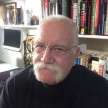Writer's Life
The Historical Novel: creating the believable lie

Writer's Life 02
Plotting The Historical Novel.
I am not a best selling author (yet - like all of us!). I have published two novels and one has received some recognition and some great reviews. So, rightfully or not, I thought I would share one the most useful plotting tools I have developed for historical novels. As a "creative fiction writer" I recognize that I am basically a liar. I lie for a living. Now, as every successful liar knows, the best lies of all are those that contain a large element of truth. When your creation (lie) is buried in a spoonful of real honey it is so much easier to swallow. It is the same with the historical novel. The one thing all historical novels have in common is a certain character's place in our known history. Nothing destroys your believability quicker than a howling error of timing in a story that is set in a specific period of history. Imagine: "Captain Nemo stood at the helm of the Nautilus and checked the time on his Apple Watch..."
You of course, would not write such a sentence - but since I do not trust myself, I developed the 'story chronology.' My two most recent novels, "The Secret City" and "The Watch," both relied heavily on an accurate presentation of actual history. The Watch was especially dependent on my knowing exactly the timing of Adolf Hitler's journey from the flophouses and streets of Vienna to the highest position of power in pre-war Germany. So, to control my narrative as I wrote, I first prepared a story chronology. This amounted to the simplest use of the Excel application - a spreadsheet program.
Excel can get complicated enough to send a module to the moon. All I needed was two columns "Date" and "Event." As I began my research - twenty years pouring through books, archives, war stories, and personal accounts from interviewees, I kept Excel open and nearby. Every time I came across an event that had an exact date attached to it, it went into the spreadsheet. By inserting lines for new information I was able to ensure that the list I was creating advanced from the earliest dates to the latest. When the research was complete (it never is, but close!) I would then insert my character's actions and events in the right place in red text.
It is a simple process, but in my final draft I could place various fictional characters right alongside an actual character at exactly the right time and place. This worked so well that many readers responded to the novel by asking me if an event I had created actually happened. "I had to read the book with reference sites open to see if something you wrote was the truth or not - I just could not tell because it all sounded so believable." That from Jim Sainsbury Eastbourne, UK.
We all know, of course, that some readers love to fact check as they read - even when it is fiction. For that reason I also buried a few nuggets for the fact checkers to find - again a device that reinforces the believability of the "lie" you want your reader to buy into. For example, during the Second World War there was one police constable in Kent who died when a spent bullet from a dogfight overhead dropped onto his unprotected head. In my story, Winston Churchill recruits well-known English occultists to cast spells against Hitler and Himmler (that's a fact you can check it!). In one chapter these witches and wizards gather to conduct a powerful rite that will direct negative energy at Hitler. A police constable (and I used his actual name) guards a road leading to the hilltop sanctuary where the ritual Sabbat is conducted. When it ends and the participants disperse, one of them (my grandmother actually), warns the constable, "Be sure to wear your helmet!"
Most readers will pass that by. Some will check the name and realize that, in a way, I honored the sacrifice of one Kentish man. Of course - the dates of this episode are entirely accurate. This is the believability factor that helps sell your historical novel and the fictional events you create.
About the Creator
Mark Newell
Mark Newell is a writer in Lexington, South Carolina. He writes historical action adventure, science fiction and horror. These include one published novel, two about to be published (one gaining a Wilbur Smith award),and two screenplays.






Comments
There are no comments for this story
Be the first to respond and start the conversation.